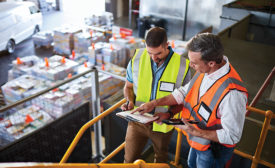Home » Keywords: » safety observations
Items Tagged with 'safety observations'
ARTICLES
Digital Edition Exclusive
See a hazard, say something
Read More
Closing Time
Tools for serious injury & fatality prevention
Seeing precursors
March 2, 2020
Critical behavior checklist for effective behavior-based coaching
Assessing exposure, severity & probability
October 8, 2018
How to best incorporate Behavior-Based Safety
Benefits: lower costs and better safety
August 3, 2018
Behavior doesn’t happen in a vacuum
You must look at the broader work system
August 3, 2015
The Behavior-based safety death spiral
Five keys to recharge an observation process
August 1, 2014
Become a Leader in Safety Culture
Build your knowledge with ISHN, covering key safety, health and industrial hygiene news, products, and trends.
JOIN TODAYCopyright ©2025. All Rights Reserved BNP Media.
Design, CMS, Hosting & Web Development :: ePublishing










